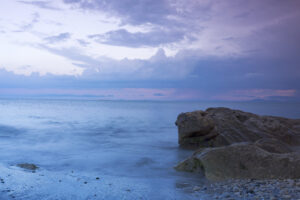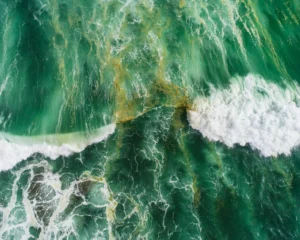Glacier Loss Raises High Concern Over Water Supplies
Massively increased ice melt in the high Himalayas because of climate change could seriously jeopardize the flow of water for billions of people in Asia.
By Tim Radford, Climate News Network

Scientific instruments take measurements on the Mera glacier in the Everest region of Nepal. (Patrick Wagnon / ICIMOD)
This Creative Commons-licensed piece first appeared at Climate News Network.
LONDON, 2 June, 2015 — The glaciers of the Everest region of the Himalayan massif — home to the highest peak of all — could lose between 70% and 99% of their volume as a result of global warming.
Asia’s mountain ranges contain the greatest thickness of ice beyond the polar regions. But new research predicts that, by 2100, the world’s highest waters — on which billions of people depend for their water supply — could be at their lowest ebb because of the ice loss.
Many of the continent’s great rivers begin up in the snows, fed by melting ice in high-peak regions such as the Hindu Kush, the Pamir and the Himalayas.
Joseph Shea, a glacial hydrologist at the International Centre for Integrated Mountain Development in Kathmandu, Nepal, and French and Dutch colleagues report in The Cryosphere journal that they used more than 50 years of climate data and sophisticated computer models of predicted climate change to study the pattern of snowpack and seasonal melt in the Everest region.
Temperature increase
They found a decrease of 20% since 1961, and signs that most, if not quite all, of the stored ice could disappear in the next 85 years.
“The signal of future glacier change in the region is clear: continued and possibly accelerated mass loss from glaciers is likely, given the projected increase in temperatures,” Dr Shea says.
”Our results indicate that these glaciers may be highly sensitive to changes in temperature, and that increases in precipitation are not enough to offset the increased melt.”
That mountain glaciers in the temperate zones and the tropics are in retreat is not in doubt. In the last two years, researchers have established patterns of ice loss in Nepal, in the tropical Andes of South America, and in the Canadian highlands.
“The signal for future glacier change in the region is clear and compelling.”
Other teams have stepped back to look at the big picture, and one calculation is that around 160,000 glaciers in Europe, Asia, and the Americas are shedding 260 billion tonnes of ice each year. This is roughly as much as is now being lost from the Greenland and Antarctic ice sheets.
The consequences for sea level rise are obvious, and ominous. But glaciers have local importance too: their spring and summer meltwater drives hydroelectric power, nourishes industrial growth in the cities, and irrigates the rice and wheat crops on which billions of people depend.
The rate and extent of glacial retreat, the scientists say, depends on the levels of greenhouse gases emitted from the burning of fossil fuels in future. And some of the loss depends on the changes in the altitude at which water freezes.
Freezing levels
Right now, in the Everest region, ice forms at 3,200 metres in January, but at 5,500 metres in August. But according to Walter Immerzeel, assistant professor of physical geography at the University of Utrecht in the Netherlands, these freezing levels could rise by between 800 and 1,200 metres by 2100.
“Such an increase would not only reduce snow accumulation over the glaciers, but would also expose 90% of the current glacier area to melt in the warmer months,” he says.
Research at high altitudes is difficult, dangerous, and subject to error. The scientists focused their study on four large glaciers in Nepal’s Dudh Kosi river basin, which holds 400 square kilometres of glacial ice. They then tested eight future climate scenarios to construct the pattern of the future.
In 2007, the Intergovernmental Panel on Climate Change reported that the Himalayan glaciers could vanish as early as 2035 — but three years later had to apologise for what was described as an “unfounded” claim.
The Cryosphere authors say their own results should also be treated cautiously. But, their paper concludes, “the signal for future glacier change in the region is clear and compelling.”
Your support matters…Independent journalism is under threat and overshadowed by heavily funded mainstream media.
You can help level the playing field. Become a member.
Your tax-deductible contribution keeps us digging beneath the headlines to give you thought-provoking, investigative reporting and analysis that unearths what's really happening- without compromise.
Give today to support our courageous, independent journalists.






You need to be a supporter to comment.
There are currently no responses to this article.
Be the first to respond.